Thursday, January 6 - Arrive in Boston
Friday, January 7 - Rest Day with Sightseeing
6:00 PM Opening Banquet at The Country Club
Saturday, January 8
Curl at The Country Club and Broomstones
9:00 AM - Game #1
1:30 PM - Game #2
Other participating clubs: Belfast, Nashua and Utica Curling Clubs
Evening: House Party hosted by Lissa and Sandy England
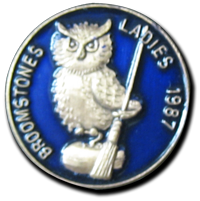 Broomstones Curling Club, a four-sheet facility, was established in 1968. It is located at 1 Curling Lane, Wayland, MA. It was built and shared by the Wellesley and Weston Curling clubs. In 1978 Brae Burn curlers lost their ice and joined Broomstones. The ladies of the three clubs formed Broomstones Ladies Curling Club in 1987. It is a social club with a mission to: develop, promote, and encourage the sport of curling for all women of all ages and abilities at Broomstones. Currently 61 active members of the USWCA at Broomstones Ladies Curling Club volunteer locally and with the USWCA.
Broomstones Curling Club, a four-sheet facility, was established in 1968. It is located at 1 Curling Lane, Wayland, MA. It was built and shared by the Wellesley and Weston Curling clubs. In 1978 Brae Burn curlers lost their ice and joined Broomstones. The ladies of the three clubs formed Broomstones Ladies Curling Club in 1987. It is a social club with a mission to: develop, promote, and encourage the sport of curling for all women of all ages and abilities at Broomstones. Currently 61 active members of the USWCA at Broomstones Ladies Curling Club volunteer locally and with the USWCA.
The Country Club began curling in 1898 on flooded ground that is now the 15th fairway. TCC hosted the 1999 Ryder Cup Golf Matches. The 1st indoor rink of artificial ice devoted exclusively to curling was opened in 1920. During WW II TCC ladies took up curling. Helen Hills, one of the founding curlers, organized the first tour of American Lady Curlers to Scotland in 1955. The Country Club has 4 sheets of ice and 35 active women curlers.
Nashua - Curling was founded at Nashua Country Club in 1928. The warm room is the original church, situated on what was a poor farm. The ice surface was once on a pond, now the 9th hole of the golf course. It moved to the tennis court area, then the shed was added onto the church and curling moved indoors. Nashua Country Club has 3 sheets of ice and 40 active lady members.
The Utica Curling Club - Benjamin Allen, who arrived from England in 1823, was an expert stonecutter and worked on the Erie Canal Expansion. Allen purchased property he was able to flood and thus form a large ice surface that was used for curling and ice skating. In 1868, he formed the Utica Curling club. In 1916, the Francis Street club was built and refrigeration was added in 1925.
Women took to the Roarin' Game and became associate members when the Utica Glengarries was established in 1948 with full membership privileges in 1990. Mixed curling became a staple of the club, and our famous Mixed Bonspiel was started in 1953. Teenagers began to curl in 1954; Little Rockers (ages 6-12) in 1989.
In 1995, the Francis Street club was destroyed by fire. But by 1996, a new facility with 6 sheets of ice had opened on Clark Mills Road in Whitestown. Since then the building has been modified for wheelchair curlers and others with disabilities.
Sunday, January 9 - Depart for Cape Cod CC
Lunch
1:00 PM - Game #3
Dinner at Cape Cod
4:00 PM - Game #4
Other participating clubs: Canadian Club of Boston and Broomstones
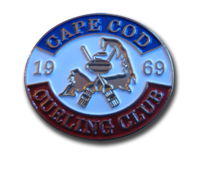 The Cape Cod Curling Club was formed in 1969. When Cape Cod Curling Club joined the Grand National Curling Club of America, Inc., it was the first club ever to send women representatives. Of our 260+ curlers today, we are proud to say that over 125 are women.
The Cape Cod Curling Club was formed in 1969. When Cape Cod Curling Club joined the Grand National Curling Club of America, Inc., it was the first club ever to send women representatives. Of our 260+ curlers today, we are proud to say that over 125 are women.
Cape Cod Curling Club is a 3 sheet club offering league play Sunday thru Friday. A combination of Open curling, Social events and Bonspiels usually take place each weekend. During our recent renovation our club - including the ice shed - became wheelchair accessible. We will have hosted our first international wheelchair bonspiel in July 2010 - including Team Cape Cod! For over 30 years our Cape Cod CC has hosted 3 annual Summer Spiels -- Mixed, Women and Men -- which are attended by teams from the US, Canada, Europe and of course, Scotland. We also host the annual competition for the Bell Quoit Trophy - a competition dating back to 1867.
The Canadian Club of Boston - Although the roots of The Canadian Club of Boston begin before the turn of the 20th century, the club itself was formally organized in 1905 as a social organization to support Canadians living in the Boston area. Curling became of interest to the Canadian Club members around 1960, using ice at the Brae Burn Country Club in Newton, MA. The Canadian Club became a member of the Grand National Curling Club of America in 1961-1962. When Brae Burn closed its curling ice, the club found a new home at The Country Club in Brookline, MA. The Canadian Club of Boston has about 45 members, of which 30% are women.
Monday, January 10 - Depart for Nutmeg
Lunch along the way
2:00 PM - Game #5
5:00 PM Dinner at Nutmeg
6:30 PM - Game #6
Other participating clubs: Albany, Ardsley, Norfolk and Schenectady
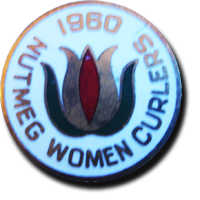 The Nutmeg Curling Club was formed in the fall of 1960. The "Founders" leased ice from the former Crystal Ice Palace in Norwalk, CT. In July 1963 a contract was signed with the Country Club of Darien.
The Nutmeg Curling Club was formed in the fall of 1960. The "Founders" leased ice from the former Crystal Ice Palace in Norwalk, CT. In July 1963 a contract was signed with the Country Club of Darien.
The "Nutmuggers" continued to curl in Darien, CT, until 1998 when the lease expired. Many club members traveled to Westchester County to curl on a regular basis, until a new home could be found. A massive fundraising effort and seed money from the estate of Mrs. Anita Bartlett White, the wife of the club's first president, helped to build a new facility. Thanks to a core group of 40 club members and many contributors across the curling community Nutmeg Curling Club moved into its new home in the Wonderland of Ice in Bridgeport, CT in October 2006.
The Albany City Curling Club was created in 1861, around the commencement of the American Civil War. It was one of the first curling clubs formed in the Northeastern United States. Members curled outside in Washington Park. In 1888 the Albany City Curling Club was playing in a shed-like structure with windows that could be opened to allow circulation of freezing air to create ice. The Albany City Curling Club disbanded in 1908. The current Albany Curling Club was incorporated in 1955. Members curled at the Schenectady Curling Club. In 1958 a site was purchased just outside the city of Albany and curling started up in a new, two-sheet, concrete block building in January, 1959. Significant renovations in the early 1970s and in 2009 expanded and refurbished the club facility. Women started curling in early 1958, forming the Albany Whisks.
The Schenectady Curling Club began in 1907 and was launched as part of the Mohawk Club. R.S. Emmet, a charter member of the Mohawk Golf Club is credited with introducing the sport to Schenectady. By 1919, there were two sheets of natural covered ice. A fire in 1923 nearly eliminated curling in Schenectady. Again, the Emmet family was instrumental in building a three sheet facility on Front Street. By 1951 our current curling facility on Balltown Road had opened its doors. It wasn't all smooth sailing though. A fire in 1959 nearly cost our organization their facility. It occurred in the middle of a bonspiel, and in true curling fashion, since the ice was not damaged, the curling went on in the charred facility. With the insurance money from the blaze some improvements were made to the club, including, in time, a modern kitchen, a centrally located bar and women's locker rooms.
In 1953 our club opened its doors to women curlers and mixed curling was not far behind. Our teenage curling program made its debut in 1956, and just recently a little rock program has been introduced for children between the ages of six and twelve.
The Ardsley Curling Club was formed in 1932 and is a member of regional and national curling associations. Our club is also home to the New York Caledonian Curling Club (believed to be the oldest continuously active sporting organization in the US), St. Andrew's Curling Club, formed in 1903 and the Ardwicks women's curling club.
The Norfolk Curling Club was established in 1953. Several sets of oddly assorted stones were kindly brought to Norfolk from the Farmington Curling Club. For our first two years games were played outside on Tamarack and Tobey Ponds. During the Autumn of 1956, the original Norfolk curling shed was built.
This is the date from which we mark our first official year of curling at the Norfolk Curling Club. However, it was not a permanent structure, consisting of a wooden building resembling nothing so much as a tobacco barn with apertures for letting in cold air at night to freeze the ice, as there was no ice making equipment.
The first curling in the shed took place on New Year's Day of 1957 with the temperature sitting at 10 degrees below zero.
By the Autumn of 1958, artificial ice-making machinery was installed, making it possible to hold the first Norfolk Men's Invitational Bonspiel in December of that year. In 1959 the club purchased thirty-two matched Ailsa Craig granite curling stones, leaving behind for good the more colorful relics of a prior age.
The old curling shed was later replaced with an insulated metal building along with enlarged locker and equipment rooms. In the summer of 1997 new lighting and a concrete floor with new pipes were installed in the Ice Shed. In the summer of 2000 we installed a fine new roof over the Ice Shed.
Tuesday, January 11 - Depart for Philadelphia
12:00 Lunch at Philadelphia Curling Club
2:00 PM Depart for Potomac Curling Club
5:00 PM Dinner at the Curling Club
6:00 PM - Game #7
Other participating clubs: Chesapeake, Philadelphia and Plainfield Curling Clubs
 The Philadelphia Curling Club traces its origins to 1957, when a few friends gathered to discuss the formation and organization of a curling club. Each contributed to a fund that was used to purchase two sets of curling stones. The group curled on rented ice in Villanova for two months that winter. In March of 1958, the Club was incorporated with charter members.
The Philadelphia Curling Club traces its origins to 1957, when a few friends gathered to discuss the formation and organization of a curling club. Each contributed to a fund that was used to purchase two sets of curling stones. The group curled on rented ice in Villanova for two months that winter. In March of 1958, the Club was incorporated with charter members.
A building lot was purchased from the Philadelphia Suburban Water Company in 1964 and ground was broken in November of that year. The 1965 to 1966 season was the first in which the club's curlers could display their finesse on their own ice, in their own building. This was an accomplishment built on substantial work and personal contributions of time, talent, and money. The original clubhouse structure included two sheets of ice and a small warming room. Over many years significant renovations were completed including the addition of a kitchen, basement, locker rooms, a new entrance, and rebuilding of the ice foundation and piping.
Philadelphia Curling Club still takes pride in being a "do-it-ourselves" club. Whether it is a matter of maintaining the premises, creating and caring for the ice, or preparing the fine dinners sponsored by the Philadelphia Belles, the members do it themselves.
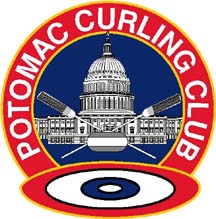 The Potomac Curling Club was founded in 1961 by six Canadians. The Club first curled on rented skating ice in College Park, MD, using stones borrowed from the American Curling Foundation. After a year, we moved to another skating rink in Silver Spring, MD housed in a former Safeway store. We had three sheets of ice, all less than standard length, and no two the same length, due to the shape of the building. In 1967 the proprietor of the rink lost his lease and ice plant was torn up.
The Potomac Curling Club was founded in 1961 by six Canadians. The Club first curled on rented skating ice in College Park, MD, using stones borrowed from the American Curling Foundation. After a year, we moved to another skating rink in Silver Spring, MD housed in a former Safeway store. We had three sheets of ice, all less than standard length, and no two the same length, due to the shape of the building. In 1967 the proprietor of the rink lost his lease and ice plant was torn up.
After two years as an iceless curling club, we were once again able to rent ice at a skating rink one night a week and resume active curling. We curled at two different skating rinks until December 2001. In February 2002, the club moved into its own building - the National Capital Curling Center, a 4-sheet dedicated curling facility.
The dedication, determination and hard work of the members of the Potomac Curling Club led to the fulfillment of a dream - a world-class curling facility, with excellent ice, available seven days a week and capable of hosting national level curling events and fostering the growth of curling.
The Chesapeake Curling Club was first formed in the winter 1979, after Bill Miller convinced Nettie Marie Jones that when she donated property to build a skating rink in Easton that a curling rink should be built alongside it.
With more than 40 members from throughout the Delmarva Peninsula and three sheets of ice, the Chesapeake Curling Club is located at the Talbot Community Center in Easton, Maryland. It is southern-most curling club in the U.S. with dedicated curling ice. We are a volunteer club and a member of the Grand National Curling Club, a confederation of 36 curling clubs in the northeastern United States, and the United States Curling Association.
Plainfield Curling Club was founded in 1963 by a small group of curlers with a passion for the game that would not be deterred. For 3 years, the club operated on rented skating ice and curled outdoors for one season. Eventually the members decided that if they were to continue, a dedicated facility was a necessity and plans were hatched to secure land, and in 1966-67 the current 2 sheet ice rink was built at our current location.
Today PCC is a thriving hub of activity. Over the years members have come and gone but the culture of community and social tradition has remained. PCC is the only facility in New Jersey with dedicated curling ice.
Wednesday, January 12 - Washington DC Tour
Evening - Banquet hosted by Potomac Curling Club
Thursday, January 13 - Depart for Cleveland
11:10 AM Arrive in Cleveland, Afternoon off
Dinner at the Mayfield Country Club
Friday, January 14
9:00 AM - Game #8 - Mayfield CC
12:00 Lunch at the Cleveland Skating Club
1:00 PM - Game #9 - Cleveland Skating Club
4:00 PM Depart for Detroit
6:00 PM Dinner at home of Mary Glowacki, Toledo Ohio
8:30 PM Depart for Detroit
Other participating club: Rochester Curling Club
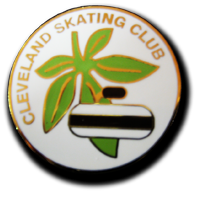 The Cleveland Skating Club first introduced curling to Northeast Ohio in 1958, thanks to enthusiasts of the game who had been using a frozen lagoon at nearby University Circle. They encouraged the 22 year old figure skating and tennis establishment to offer this very old sport to a new population. We still have CSC supporters among us who remember stepping out on five sheets of ice in those early days. Club members took to curling and developed a reputation as an active group of fun loving devotees who loved the traditions as much as the social and athletic aspects of the sport. In 1961, the group hosted their first International Bonspiel, beginning an unbroken tradition that celebrates its 50th anniversary in January, 2011.
The Cleveland Skating Club first introduced curling to Northeast Ohio in 1958, thanks to enthusiasts of the game who had been using a frozen lagoon at nearby University Circle. They encouraged the 22 year old figure skating and tennis establishment to offer this very old sport to a new population. We still have CSC supporters among us who remember stepping out on five sheets of ice in those early days. Club members took to curling and developed a reputation as an active group of fun loving devotees who loved the traditions as much as the social and athletic aspects of the sport. In 1961, the group hosted their first International Bonspiel, beginning an unbroken tradition that celebrates its 50th anniversary in January, 2011.
Throughout the years the group has found that within the broader club structure, curlers at the CSC enjoy the benefits of maintenance and services that enhance curling programs; though sharing arena ice with vibrant figure skating and hockey programs poses challenges as well. Diligent advocacy on behalf of the best possible ice conditions for curlers and cooperative planning with other ice users has always been important, but recent success helped the group pursue their goal of increasing membership to 100 active curlers. As the interest in curling has lately grown in this area as it has nationally, this club has been increasing ice time and experimenting with programs that serve curling and CSC curlers on more levels.
Participating in regional and national curling organizations like USWCA and Great Lakes Curling Association, and enjoying opportunities to curl with other clubs in the state like Mayfield, Columbus and Bowling Green, enriches the curling experience and has proved a mutual source for new ideas, suggestions and solutions for the future.
 Mayfield Curling Club - Curling activity began in the spring of 1962 when several curling enthusiasts purchased a portable ice plant (used), capable of freezing three sheets, and erected an outside rink with a warming house. The extremely cold and snowy winter of 1962-1963 convinced the curlers of the need for some cover over the ice rink. In the spring of 1963 the Mayfield Country Club agreed to advance funding for the steel building if the curlers would agree to obtain it.
Mayfield Curling Club - Curling activity began in the spring of 1962 when several curling enthusiasts purchased a portable ice plant (used), capable of freezing three sheets, and erected an outside rink with a warming house. The extremely cold and snowy winter of 1962-1963 convinced the curlers of the need for some cover over the ice rink. In the spring of 1963 the Mayfield Country Club agreed to advance funding for the steel building if the curlers would agree to obtain it.
Sufficient number of members to subscribe to a curling fee which in the aggregate would cover the annual operating cost for each year; and additional funds needed to complete the curling facility, as it is known today. Through growth in curling membership the curlers fulfilled their commitment to the Club, debentures were written off and for almost fifty years curling has been a vital and socially active contribution to the winter scene at the Mayfield Country Club. Currently there are 180 curling members at Mayfield.
Over the years the Mayfield curlers have made their mark in the curling world. We have had the pleasure to host the 1981and 1991 Scottish Ladies Curling Tour, 1992 Senior Ladies Bonspiel, and 1997 and 2007 Scottish Men Tour.
The Rochester Curling Club began in 1961 when Lewis A. Elkin, manager of the Rochester Institute of Technology (RIT) skating rink, read about a group of Kodak employees who had gone to Toronto for a curling match with their Canadian colleagues. He conceived an idea of a curling clinic and bonspiel to introduce curling to Rochester. He called upon two of the Kodakers, Ralph Sutherland and George Greer, to help him.
The first Rochester International Bonspiel and Curling Clinic took place on April 14-16, 1961. Rinks from Utica, New York and Niagara Falls, Ontario, brought their own stones hacks and brooms. Several Rochesterians filled out the ranks of these participating rinks. The endeavor was a success, and Elkin then called upon the local group to help him found a curling club. The first meeting was held at Locust Hill Country Club on June 21, 1961, and the name "Rochester Curling Club" was selected.
At the Annual Meeting in 1966, the membership elected to build its own complex. 24 hardy individuals raised enough money to build the two sheet version of our current club. This included raising money to buy the present property at 71 Deep Rock Road In 1972, the club expended the facility to house 4 sheets of ice and enlarged the warm room.
The RCC crest is the emblem encircled within a belt and buckle. The emblem consists of two Scottish thistles in flower upon a rope of blue and gold.
Saturday, January 15 - City and Pottery House Tour
12:00 Lunch at Detroit Institute of Arts
4:00 PM - Game #10
Evening "Walk around dinner"
Other participating club: Bowling Green Curling Club
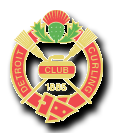 The Detroit Curling Club was first curling club in the United States organized in 1831 only 30 miles from Detroit at Orchard Lake, Michigan. Called the Orchard Lake Curling Club', the club used hickory block 'stones'. A Detroit Curling Club was started back in 1840 when Michigan only had a population of 212,000 and had only been in the Union for three years!
The Detroit Curling Club was first curling club in the United States organized in 1831 only 30 miles from Detroit at Orchard Lake, Michigan. Called the Orchard Lake Curling Club', the club used hickory block 'stones'. A Detroit Curling Club was started back in 1840 when Michigan only had a population of 212,000 and had only been in the Union for three years!
Along about this time an organization, called the 'Thistle Club' was founded, and curling being a winter sport, was played when the ice was right on the Detroit River at the foot of Joseph Campau, on the bay, and at the old Recreation Park. These clubs became the 'Granite Club' and in 1885 the present Detroit Curling Club was organized. Early curling matches were decided on the old Detroit Athletic Club field on the west side of Woodward Avenue, between Canfield and Forest Avenue, on natural ice, lighted by lanterns.
The only similarity between those days and today was the red-faced, raucous shouts of the skips!
Around the turn of the century (1899-1900) The Detroit Curling Club moved into its quarters at 1236 West Forest Avenue in the City of Detroit where the first Clubhouse was erected in 1906. In 1948 a disastrous fire partially destroyed the building, but not the spirit of the curlers. The damage was repaired and modern ice machines installed with six rinks of the best lighted ice to be found anywhere.
In 1979 the city of Detroit purchased the old Clubhouse bringing about the move to a more modern facility in West Bloomfield, Michigan. In 1996 after a period of time of declining membership and escalating cost of commercial property taxes and maintenance the club and land was sold. While the club looked for a more affordable home our gracious Canadian neighbors provided ice time on Sunday nights so that the club could remain active. After 5 years of searching and hard work by dedicated members, the Detroit Curling Club once again found a home, which is the current curling facility located in the city of Ferndale, Michigan. With a more central location in the Detroit Metropolitan area and the spark of interest in the game generated by the inclusion of the sport in the Olympics, the Detroit Curling Club is once again brimming with members enjoying the "grand ole game."
Bowling Green Curling Club - Bowling Green State University opened the doors of its new Ice Arena on February 10, 1967. Occupying the southern wing of the Ice Arena was a curling rink with four sheets of ice and a spacious curling lounge designed for viewing the curling ice. Since curling was a new sport to this area, it was necessary to hold free curling clinics and open curling sessions to introduce the game.
Tom Reicosky, who worked for the University Athletic Department, was appointed to be the first "director of curling." He organized some informal leagues that continued to operate until the end of the school year.
Mr. J. Howard Starr, the manager of the Ice Arena, appointed a Steering Committee for Curling which met on May 11, 1967. This committee recommended the formation of a curling club for the following year. Although that represented the origin of the Bowling Green Curling Club, it was an informal group and Mr. J. Howard Starr, the manager of the Ice Arena, appointed a Steering Committee for Curling which met on May 11, 1967. This committee recommended the formation of a curling club for the following year.
Although that represented the origin of the Bowling Green Curling Club, it was an informal group and directed league curling in 1967-68 without benefit of established rules or a club constitution. The strong development of curling that year included an exhibition by the Mike Slyzuik rink from Detroit, than national champions, and organizing the club's first bonspiel on December 9, 1967. In February of 1968 a Constitution Committee was formed and chaired by Alex Stone. However, the constitution was not approved by the club until the next year.
At a meeting of the Executive Committee on May 23, 1968, Ron Smith was elected president of the club and Margot Hull was named treasurer. It was interesting to note that there was no balance in the treasury at the end of the year (that is called a perfect season). Unfortunately, there were no records kept of the membership.
However, starting in the 1968-69 season, accurate records of membership and finance were kept of the membership. Therefore, we are using the 1968-69 year as the charter year for the Bowling Green Curling Club.
Sunday, January 16 - Depart for Chicago Area Clubs
Lunch on the road
2:30 PM - Game #11
7:00 PM Banquet at Exmoor Country Club
Monday, January 17 - Chicago Curling Club
9:00 AM - Game #12
Lunch at Chicago CC
1:00 PM City Tour of Chicago
Evening - Dinner at the home of Jennifer Geake
Other participating clubs: North Shore and Waltham Curling Clubs
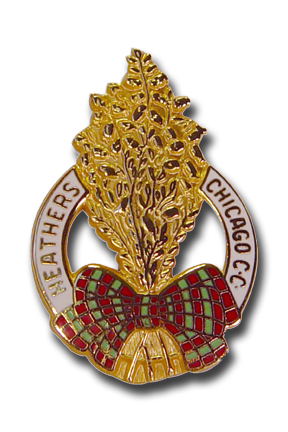 The Chicago Curling Club was founded in 1949 at its present location. There are over 75 women curlers know as Chicago Heathers. Even before the doors officially opened at CCC, the Women's Division was up and running. They met casually for the first time on December 15, 1948, at the Skokie Country Club, to set up their governing board and plan their first events.
The Chicago Curling Club was founded in 1949 at its present location. There are over 75 women curlers know as Chicago Heathers. Even before the doors officially opened at CCC, the Women's Division was up and running. They met casually for the first time on December 15, 1948, at the Skokie Country Club, to set up their governing board and plan their first events.
In 1950, the Heathers hosted the second USWCA Annual Bonspiel. The club is home to the American Curling Foundation and Museum. Celebrating their 60th Anniversary, the Chicago Curling Club has hosted many National Curling Bonspiels and Championship competitions. We are proud that since the very beginning every Tour has curling at our club and enjoyed "Heather Hospitality."
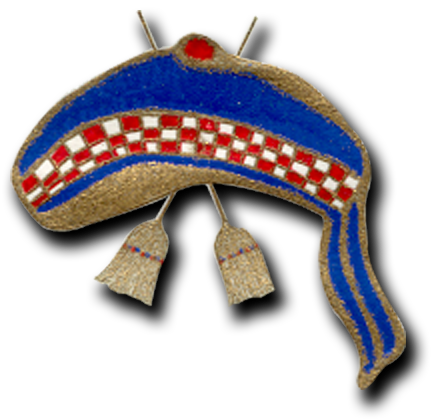
The Exmoor Curling Club - Curling started at Exmoor in 1938 on two sheets of natural ice. In 1946 Exmoor Women organized themselves as the Highlanders and one year later, along with four other Midwestern clubs, formed the United States Women's Curling Association (USWCA). Curling moved indoors in 1957 with the opening of our current four sheet facility.
Through the years Exmoor Women have excelled on and off the ice. To name a few: Ann Swisshelm Silver was a member of three teams that won the United States Curling Association (USCA) Women's National Championship and in 2003 her team went on to win the World Championship. She also competed in the 2002 Olympics. Other Exmoor Women have won Junior and Senior National Championships and competed in World Championships. They have also won many USWCA national events and state titles.
On the administrative side, Ann Brown was the first woman to be elected President of the USCA. Georgia West has since served in that position and both women also served as President of the USWCA. Ann was inducted into the US Curling Hall of Fame in 1993.
The North Shore Curling Club began curling in January 1951 on two sheets of outdoor ice surrounded by canvas walls and lighted with floodlights. These facilities were built along Glenview Road opposite the caddie house and were financed by donations from 78 members of our club. The first full season for North Shore Curlers was in 1951- 1952, and the club became a member of the Midwest Curling Association.
The formal opening of these facilities with two sheets of ice operating and a "Gala Brunch" was held on October 30, 1955. The event was written up in the North American Curling News with seven pictures and a long article entitled "NORTH SHORE GIVES COUNTRY CLUB CURLING A BOOST." This article stated that North Shore "now makes history in blossoming forth as the first country club in the Chicago area to have a permanent curling building, refrigerated ice and all necessary appurtenances to the game" - and after detailing most of the above and much more, ended with this tribute and prediction: "Unless the Curling News is in error, the admirable action taken by the Board of Directors of the North Shore Club marks the first time (at least in the Midwest) that a country club 'has seen the light' and recognized Curling as a major activity.
The Waltham Curling Club had its beginnings when immigrants from Scotland brought the sport of curling with them to the Waltham Township area in the mid 1800's. Curling began on local ponds and lakes frozen by the winter weather. The club itself was established in 1884. In 1937, the club moved to Triumph, still curling on outside natural ice. The present building was erected in 1940 and the use of artificial ice came into existence. With "indoor curling" now available, women began curling under the name of the Waltham Curlerettes and mixed curling began at The Waltham Curling Club. The men's club and the Curlerettes joined together into one club in the 1990's. Local curling has been attracting more and more interest since curling has become an Olympic sport.
Tuesday, January 18 - Depart for Milwaukee CC
10:00 AM - Game #13
12:30 PM Lunch at home of Mike and Dierdre Snyder
2:30 PM - Game #14
7:00 PM Banquet at Hubbard Lodge
Other participating club: Racine Curling Club
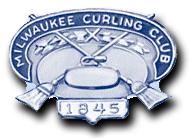 The Milwaukee Curling Club was formed in 1845 when Scottish settlers began curling on the frozen Milwaukee River in the early 1840's. The club was moved to Riverside Park in 1915 where two covered sheets of ice provided a home for the next 55 yrs. The modern game of curling evolved rapidly added greatly by the invention of refrigerated ice, and in 1970 the club relocated to its current site at the Ozaukee Country Club in Mequon, Wisconsin. The first mixed bonspiel in the United States was held at MCC in 1951 organized and chaired by club member Bernie Roth (first president of the USWCA) and in 2010, we hosted the 60th anniversary of the Milwaukee Kiltie Mixed Bonspiel. Today Milwaukee Curling Club has 175 members and is the oldest, continuous curling club in the United States.
The Milwaukee Curling Club was formed in 1845 when Scottish settlers began curling on the frozen Milwaukee River in the early 1840's. The club was moved to Riverside Park in 1915 where two covered sheets of ice provided a home for the next 55 yrs. The modern game of curling evolved rapidly added greatly by the invention of refrigerated ice, and in 1970 the club relocated to its current site at the Ozaukee Country Club in Mequon, Wisconsin. The first mixed bonspiel in the United States was held at MCC in 1951 organized and chaired by club member Bernie Roth (first president of the USWCA) and in 2010, we hosted the 60th anniversary of the Milwaukee Kiltie Mixed Bonspiel. Today Milwaukee Curling Club has 175 members and is the oldest, continuous curling club in the United States.
The Racine Curling Club Belles have 32 members and curl on 2 sheets of ice. Their club was organized in 1954 with outdoor curling until 1966, when their present facility was built. Racine is situated on the shoreline of Lake Michigan, just south of Milwaukee.
Wednesday, January 19 - Depart for Kettle Moraine CC
10:30 AM - Game #15
1:00 PM Lunch at the Curling Club
2:30 PM - Game #16
7:00 PM Dinner at the Curling Club
Other participating clubs: Wauwatosa, Racine and Blackhawk Curling Clubs
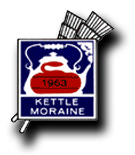 Kettle Moraine Curling Club was incorporated in November of 1962. The existing site was constructed in the early 1930's for the notorious Al Capone. At that time, it was used as a riding arena in a complex of equestrian structures and a vacation hideaway for "Chicago Gangsters." In the late 1930's, it became a training camp for the old Milwaukee Brewer's baseball team. It later served for cattle auctioning and used car sales. Remodeling and construction to turn the building into a curling club began in October of 1963.
Kettle Moraine Curling Club was incorporated in November of 1962. The existing site was constructed in the early 1930's for the notorious Al Capone. At that time, it was used as a riding arena in a complex of equestrian structures and a vacation hideaway for "Chicago Gangsters." In the late 1930's, it became a training camp for the old Milwaukee Brewer's baseball team. It later served for cattle auctioning and used car sales. Remodeling and construction to turn the building into a curling club began in October of 1963.
The first official curling season began in the fall of 1964. The name of the club was derived from the glacier formed Kettle Moraine where it is located. In the fall of 1969, an adjacent lot was purchased so that the club now owns almost 5 acres of land. It has gone through three major renovations, in 1971, in 1985, and the latest in 2008. We can now boast of having one of the finest curling clubs in the Midwest.
Through the years, our membership has increased from 35 to approximately 225 members. KMCC provides Men's, Women's, Mixed and Junior league events. The club sponsors many bonspiels and has been host to both State and National Championship Events. KMCC also has a training program for students from area schools that are bussed in to experience the sport of curling. This program has also been extended to area businesses.
Wauwatosa Curling Club was founded in 1920. It moved to artificial ice in 1940 in a municipal building. The Wauwatosa Granites became the first organized women's curling club in 1941. They chose the name of Granites because the women of the Toronto Granite Club had first encouraged the Wisconsin women to curl. Wauwatosa, Appleton, of Wisconsin, together with Exmoor, Indian Hill and Skokie, of Illinois, organized the USWCA in 1947. Mary Van Ess and Bernie Roth, both past Presidents of the USWCA and curlers at Wauwatosa, have been elected to the U.S. Curling Hall of Fame.
The Blackhawk Curling Club began in 1965 with the members playing in Rockton, IL at the Wagon Wheel Resort. The ice was later relocated to the Oscar Meyer Sales Barn between Beloit and Janesville.
In 1972 a new and designated Curling Club was built at the Rock County 4H Fairgrounds. Housing 3 sheets of ice, the steel building was expanded in the late 1980's to increase clubhouse space.
Women have always played an important role in the Blackhawk Curling Club and have all the rights and responsibilities of full membership and their own Board with a full slate of officers. Originally known as the Rockettes, the women curlers are now the Blackhawk Brooms, named for the flower of the broom plant from whose coarse stalks, broomstraw, is derived. Blackhawk has more than 170 members, of which nearly 70 are women. Blackhawk hosts a Women's, Men's and Mixed Invitational Bonspiel each year. We also have a strong and active Junior Curling Program.
Thursday, January 20 - Depart for Madison CC
10:30 AM - Game #17
1:00 PM Lunch at Madison
2:30 PM - Game #18
7:00 Dinner at Maple Bluff Country Club
 Madison Curling Club dates back to 1921, when some hearty University of Wisconsin professors and Madisonians made one sheet of ice under the stadium bleachers at Camp Randall on the campus of the University of Wisconsin. The early curlers each had their own set of stones and, therefore, uniform size and performance of stones was virtually nonexistent. The club was located under the Camp Randall bleachers from 1921 to 1929.
Madison Curling Club dates back to 1921, when some hearty University of Wisconsin professors and Madisonians made one sheet of ice under the stadium bleachers at Camp Randall on the campus of the University of Wisconsin. The early curlers each had their own set of stones and, therefore, uniform size and performance of stones was virtually nonexistent. The club was located under the Camp Randall bleachers from 1921 to 1929.
In 1930, these members got permission from the City of Madison to build a wooden building with casement windows at Burr Jones Field on East Washington Avenue. Ice was made when the weather was cold enough. Due to lack of artificial ice making equipment, some of the early "spiels" would have curling draws into the early morning hours.
In 1950, a cement block 18 x 45 foot clubroom with a small kitchen was added and artificial ice making equipment was installed under the sand of the four sheets. In 1958 the wooden walls of the rink house were replaced with cement blocks and the men's locker room and the clubroom were expanded. Expansion of the men's locker room took place in 1964, along with the addition of a women's locker room. The Madison Curling Club was at the East Washington Avenue location for seventy-nine years. Unfortunately, in September of 1997, the club's relationship with the City of Madison came to an end.
In June of 1997, our new multipurpose, six sheet facility was constructed at a cost of 1.3 million dollars William McFarland Park in McFarland, WI. The club's relationship with the Village of McFarland has been a positive experience. Together the Madison Curling Club and the Village of McFarland will make it possible for generations to enjoy the game and foster the spirit of the "grand old game" of curling.
Friday, January 21 - Wisconsin State Capitol tour and shopping on State Street
Lunch in city
4:00 PM Depart for the Portage Curling Club
6:00 PM Dinner in Portage
8:00 PM - Game #19
Other participating club: Poynette Curling Club
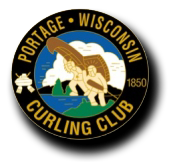 The Portage Curling Club - Curling in the Portage area dates back to the 1850s, and the club is recognized as one of the first of its kind in the state of Wisconsin. Early games were played on the Wisconsin River, as well as a local lake until an indoor structure was constructed in 1910. The structure was comprised of 9 sheets for play, as well as a community clubhouse and dancehall. Unfortunately, this structure succumbed to fire in 1945, and the current facility was built shortly thereafter. The club has hosted numerous national level competitive events, and also boasts a popular youth program. The local high school also utilizes the facility for physical education classes and as home ice for competitive boys and girls teams. Adult league play begins in November and ends in March with the Men's & Women's club playdowns.
The Portage Curling Club - Curling in the Portage area dates back to the 1850s, and the club is recognized as one of the first of its kind in the state of Wisconsin. Early games were played on the Wisconsin River, as well as a local lake until an indoor structure was constructed in 1910. The structure was comprised of 9 sheets for play, as well as a community clubhouse and dancehall. Unfortunately, this structure succumbed to fire in 1945, and the current facility was built shortly thereafter. The club has hosted numerous national level competitive events, and also boasts a popular youth program. The local high school also utilizes the facility for physical education classes and as home ice for competitive boys and girls teams. Adult league play begins in November and ends in March with the Men's & Women's club playdowns.
The Poynette Curling Club began in at least the early to mid 1850's when many Scottish families emigrated into the area. Curling in those days was primarily played on the lower mill pond in the middle of the village. In 1875 the Poynette Curling Club was formally incorporated with 51 charter members. The first rink house was built in 1891 at the location of its present building. Refrigeration was added in 1954, and in 1998 the entire icehouse was rebuilt enabling over 9 months of curling a year. In 1947 a woman's league was formed, and the men's and women's leagues were combined into one club in the 1960s. Poynette High School curling started in 1952. To date the high school boys and girls teams have between them won 10 Wisconsin State curling bonspiel championships. Two PHS curlers have gone on to represent the United States on our Olympic Women's curling teams.
Saturday, January 22 - Depart for Green Bay CC
12:00 Lunch at Green Bay
1:00 PM - Game #20
3:30 PM - Game #21
7:00 PM Dinner
Other participating clubs: Appleton and Clintonville Curling Clubs
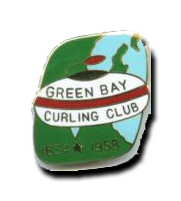 The Green Bay Curling Club was established in 1958, using ice at the Brown County Arena. In 1960 a two-sheet club was built at the present location, 781 Potts Avenue in Ashwaubenon. In 1993 the membership decided to expand the ice house part of the club to add a third sheet of ice. And in 2004 a new clubhouse was built. We average about 160 members each year. The Green Bay Curling Club is recognized as one of the best curling facilities in the US, and last year we were chosen to be the Olympic training site for the 2010 Olympic teams and elite curlers.
The Green Bay Curling Club was established in 1958, using ice at the Brown County Arena. In 1960 a two-sheet club was built at the present location, 781 Potts Avenue in Ashwaubenon. In 1993 the membership decided to expand the ice house part of the club to add a third sheet of ice. And in 2004 a new clubhouse was built. We average about 160 members each year. The Green Bay Curling Club is recognized as one of the best curling facilities in the US, and last year we were chosen to be the Olympic training site for the 2010 Olympic teams and elite curlers.
Appleton Curling Club was established in 1939 with outside ice and went indoors with natural ice in 1945. It was converted to a 4 sheet club in 1960. In 2004 the entire arena was remodeled with new walls and an entirely new ice bed. In 2010 both floors of the clubhouse were extensively remodeled. These additions have greatly improved our club. The unique two-level view of the ice has established Appleton as one of the finest curling facilities in Wisconsin
The Clintonville Curling Club was started in 1948 when one of the members of the Waupaca Curling Club convinced some Clintonville friends that the sport of curling would be a welcomed addition to the Clintonville area; something that would provide fellowship and recreation over the winter months to the benefit of the city and surrounding area. The clubhouse was built on donated land with mostly volunteer labor and materials.
The Club was originally open to all interested adult males in the community and surrounding area with weekly league play and "open ice" at any time for practice and/or introduction to the sport for new players.
In every year since the founding, the Club has hosted an invitational "bonspiel" with 16 teams (15 of them being guest teams from other Clubs) competing over a weekend in a play-down format. Teams from throughout the state and as far away as Canada have consistently participated in this event.
As the popularity of the sport grew locally, participation was expanded to women's league play and couples' league play. For a period of time a youth program was developed in cooperation with the Clintonville School system, but that program was suspended due to insurance concerns with the WIAA. In an effort to expose young people to curling, youth programs have been continued with volunteers from the club. With the introduction of curling as Olympic sport in 1998, interest has continued to build, and we are again working with the school system on an introductory program for students.
Sunday, January 23 - Depart for the Medford CC
12:30 PM Brunch in Medford
3:00 PM Depart for Duluth Curling Club
6:30 PM Dinner at the Duluth Curling Club
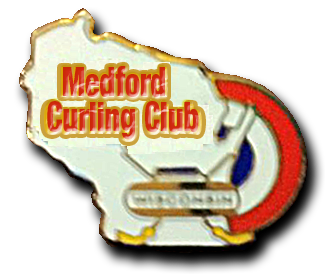 The Medford Lochettes are celebrating their 60th anniversary of curling. Founded in 1950 with ten teams and many subs and later adopting a constitution, club pin and name in 1953. In 1969, stock purchases enabled the women to become active in the clubs management and decision making aspects, and electing women to the club Board of Directors. In 1951, the Lochettes joined the USWCA and have had members involved in the Scottish Tour and Canadian Friendship Tour. On the state level, Medford was active in the organization of the Wisconsin Badger Women's Curling Association and is a charter member. Also as the story goes, Medford is known as the only club that prevented the future president of the United States from walking out on the ice during the Wisconsin Badger Bonspiel (then senator John F. Kennedy).
The Medford Lochettes are celebrating their 60th anniversary of curling. Founded in 1950 with ten teams and many subs and later adopting a constitution, club pin and name in 1953. In 1969, stock purchases enabled the women to become active in the clubs management and decision making aspects, and electing women to the club Board of Directors. In 1951, the Lochettes joined the USWCA and have had members involved in the Scottish Tour and Canadian Friendship Tour. On the state level, Medford was active in the organization of the Wisconsin Badger Women's Curling Association and is a charter member. Also as the story goes, Medford is known as the only club that prevented the future president of the United States from walking out on the ice during the Wisconsin Badger Bonspiel (then senator John F. Kennedy).
Monday, January 24 - Duluth Curling Club
9:00 AM - Game #22
other participating club: Superior Curling Club
11:30 AM Lunch
1:00 PM Depart for Curl Mesabi
3:00 PM - Game #23
6:00 PM Dinner
Other participating clubs: Itasca and Hibbing Curling Club
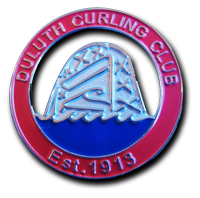 The Duluth Curling Club was organized in 1891. The original building was a tent between two retaining walls in downtown Duluth, but it was carried away by a blizzard that winter. Another building up and away from the lake was then converted for use, until a structure was purpose-built in 1897 at on the waterfront.
The Duluth Curling Club was organized in 1891. The original building was a tent between two retaining walls in downtown Duluth, but it was carried away by a blizzard that winter. Another building up and away from the lake was then converted for use, until a structure was purpose-built in 1897 at on the waterfront.
Since 1976 the Club has been located at the Duluth Entertainment Convention Center (DECC). It is our fourth building, but our first heated building. It can be expanded to provide up to 13 curling sheets for major events, and is the largest facility in the United States. With this facility, we have grown to the second largest club in the US; only the St Paul (MN) Curling Club has more members.
We have hosted two World Championships, the US Olympic Trials, and numerous National events. Two DCC members have been inducted into the Curling Hall of Fame for service to the sport. Numerous members have participated in and won State and National Championships over the years, and even a few World and Olympic Championships.
The Superior Curling Club's first record of curling was in 1893, the first rink being outdoors. In 1895, pioneer curlers raised funds to build a new indoor facility. The new building covered two sheets of curling ice surrounded by a skating area. In 1908 shares were sold to build a new club. When completed, the club had five curling sheets and a 70 x 145 ft skating rink. In the early 1900s, curling was so successful that a second club had 3 sheets and a skating rink. In 1925, the Superior Curling Club expanded to seven new sheets of ice, a new kitchen, and a viewing area. In 1935, heavy snow collapsed the walls on the skating side of the building and was rebuilt with WPA money, but the curling members had to cede their rights of ownership to the city in turn for a long term lease. WWII, with its drain on the number curlers, forced the club to close in 1943.
During the late 1980s, a modern new four sheet club was built at the Head of the Lakes Fairgrounds. Superior is home to Bud Somerville, the first American to win the world curling championship. Acknowledged as America's greatest curler, Somerville was the very first inductee into the USCA Curling Hall of Fame, and in 2001 received the World Curling Federation's highest honor, the Freytag Award.
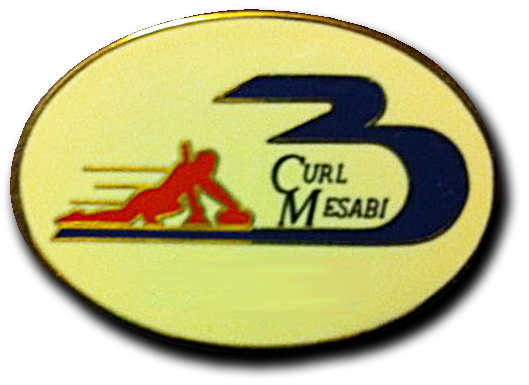 Curl Mesabi is located in the facility Range Recreation and Civic Center (ROCK) in Eveleth, Minnesota. The eight sheet state of the art facility was built in 1998 with the cooperation of local governments, state government, the Iron Range Resources Board and the curling clubs of Virginia Lenont, Eveleth, and Gilbert, Minnesota. These former clubs combined to form Curl Mesabi.
Curl Mesabi is located in the facility Range Recreation and Civic Center (ROCK) in Eveleth, Minnesota. The eight sheet state of the art facility was built in 1998 with the cooperation of local governments, state government, the Iron Range Resources Board and the curling clubs of Virginia Lenont, Eveleth, and Gilbert, Minnesota. These former clubs combined to form Curl Mesabi.
Itasca Curling Club was incorporated in 1968 in Grand Rapids, Minnesota. The organization still did not have a club building but they did have a place to curl...outside under the grandstands at the fairgrounds. This was a very "rustic" setting. Curling was new to everyone, very informal, and often curling protocol was not followed as curlers just didn't know the rules of courtesy. Often someone would step into the house and ask the skip, "Why did you do that?" Then disaster struck! The bleachers burned down and the curlers no longer had a place to curl.
There was a year or more of no curling for Itasca Curling Club while they searched for a place to curl. They looked at vacated iron ore mining buildings and even a huge barn offered by a local farmer. The club members did lots of fundraising and built a club in its present location in 1973.
In January of 1997, disaster struck once again. The club was holding a men's bonspiel. The curlers had just left the ice and were in the clubrooms when the roof caved in from an overload of heavy snow. There was no curling the rest of the year.
The club was rebuilt in 1998 making the clubrooms larger AND making the sheets of ice regulation size. Leagues resumed curling in 1999 and is still going strong today. The club retains about 125 members and has four sheets of ice. We are located at 902 Hale Lake Pointe in Grand Rapids.
The Hibbing Curling Club was formed in 1942, and hosts the largest bonspiel in the United States each year, called "the Men's Last Chance" with 128 teams on 13 sheets of ice.
Tuesday, January 25 - Depart for Fargo, ND
Lunch along the way
4:30 PM Arrive in Fargo/Moorhead Curling Club
5:00 PM Dinner at the NDSU Alumni Center
7:00 PM Curl - Game #24 & Game #25, Ice Cream Social to follow
Other participating clubs: Grafton and Grand Forks Curling Clubs
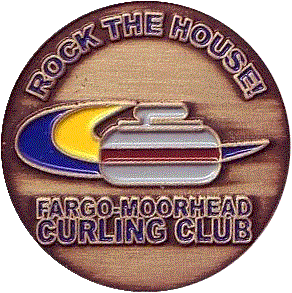 Fargo-Moorhead Curling Club is located in these twin cities close to the North Dakota State University and lies on the south eastern edge of North Dakota. They have 4 sheets of ice and are currently seeking to build a new facility. They joined the USWCA in 1970 and have approximately 43 lady curlers.
Fargo-Moorhead Curling Club is located in these twin cities close to the North Dakota State University and lies on the south eastern edge of North Dakota. They have 4 sheets of ice and are currently seeking to build a new facility. They joined the USWCA in 1970 and have approximately 43 lady curlers.
Grafton Curling Club's roots date back to 1914 when the club first opened in 1966 they began curling in the present 2-story club with 4 sheets of ice. Women's curling was organized in 1957 and has been a member of the USWCA since 1967. The lady Heathers have 42 members. Grafton has hosted numerous championship teams both men and women, at state and national levels.
Grand Forks Curling Club's ladies are known as the Scotties with a membership of 49 who curl on 4 sheets of ice. Grand Forks lies on the eastern edge of North Dakota and is home to the University of North Dakota.
In February 1914, the founding of the Caledonia Curling Club marked the first official club in Grand Forks, while records in northeastern North Dakota date back to the 1880's. Throughout the 1920's the club was stable but with the economic decline in the 1930's, the club closed. In 1954 the Grand Forks Curling Club was organized and hosted a bonspiel attracting 52 rinks from the area. In 1960, we officially opened a new 4 sheet curling club at its current location. Since that time we have gone on to host National Championships, World Curling tours, Scot Tours and the Transoceanic Curling Match.
Wednesday, January 26 - Depart for St Paul, MN
9:00 AM - Game #26
11:30 AM Lunch
1:00 PM Depart for St. Paul
5:00 PM Arrive at St. Paul Curling Club
6:00 PM Dinner
8:00 PM - Game #27
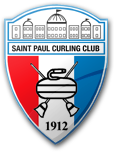 The St Paul Curling Club began on the Mississippi River in the 1870s at Raspberry Island near downtown St. Paul. During the 1880s and 1890s several clubs were formed but only the St Paul Curling Club survived. The current clubhouse was built in 1912; it has enjoyed many facelifts and remodels through the decades, always maintaining a comfortable and welcoming character. It is situated in a historic district of St. Paul called Cathedral Hill, attracting many tourists and visitors. The club is currently the largest in membership in the USA, boasting 1100 members who curl Monday through Sunday on 8 sheets of ice.
The St Paul Curling Club began on the Mississippi River in the 1870s at Raspberry Island near downtown St. Paul. During the 1880s and 1890s several clubs were formed but only the St Paul Curling Club survived. The current clubhouse was built in 1912; it has enjoyed many facelifts and remodels through the decades, always maintaining a comfortable and welcoming character. It is situated in a historic district of St. Paul called Cathedral Hill, attracting many tourists and visitors. The club is currently the largest in membership in the USA, boasting 1100 members who curl Monday through Sunday on 8 sheets of ice.
Leagues occupy 3 draws per night, 2 day leagues serve curlers with flexible schedules, junior curlers take over on Saturdays. St. Paul Curling Club is host to many annual bonspiel events for men, women, juniors, novice curlers, mixed teams and has hosted national and international events and competitions. It also serves the community as a rental facility for work and civic groups seeking a unique experience or meeting space. Women curlers began curling in their own league in 1951. Many of these curlers were wives of current members. Eventually women could join on their own. They took the name Bonnie Spielers.
Women curlers began curling in their own league in 1951. Many of these curlers were wives of current members. Eventually women could join on their own. They took the name Bonnie Spielers. The women's league currently plays on Wednesday evenings with 22 teams. League player vie for many traditional trophies.
Arden Hills Curling Club opened in 1974 as part of a tennis club, serving members in the broader, northern areas of St. Paul. Cairn Lassies were the women's league curlers, most of whom had originally been Bonnie Spielers. When the curling arena of the club closed, they returned to St Paul and joined the daytime Bonnies. All daytime women now curl as Arden Hills Cairn Lassies, retaining a separate identity within the structure of the St Paul Curling Club. Currently 50 members curl Tuesday mornings as Cairn Lassies, vying for league trophies named for past glorious members.
The women's league currently plays on Wednesday evenings with 22 teams. League player vie for many traditional trophies.
Thursday, January 27 - Depart for Seattle
9:00 AM - Game #28
11:30 AM Lunch hosted by St Paul and Arden Hills Curling Club
1:00 - 4:00 PM Shopping at Mall of America
6:25 Flight to Seattle
8:00 (PST) Arrive in Seattle
Friday, January 28 - City Tour of Seattle
5:00 PM Dinner at Granite Curling club
7:00 PM - Game #29
Saturday, January 29
10:00 AM - Game #30
Lunch following Games
7:00 PM Closing Banquet
Other participating clubs: San Francisco Bay Area, Coyote and Evergreen Curling Clubs
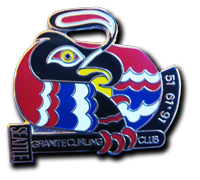 The Granite Curling Club is the only dedicated curling facility on the west coast of the United States and has been operating in its present facility since 1961. It is a five sheet facility and is home to approximately 400 curlers. The Granite Curling has been the home to more national championship teams (38) than any other U.S. curling club. Located about two hours south of British Columbia, Canada our curlers go north to fine tune their skills. The club has hosted several U.S. National Championships in addition to the USWCA National Bonspiel.
The Granite Curling Club is the only dedicated curling facility on the west coast of the United States and has been operating in its present facility since 1961. It is a five sheet facility and is home to approximately 400 curlers. The Granite Curling has been the home to more national championship teams (38) than any other U.S. curling club. Located about two hours south of British Columbia, Canada our curlers go north to fine tune their skills. The club has hosted several U.S. National Championships in addition to the USWCA National Bonspiel.
The San Francisco Bay Area Curling Club was founded in 1958 in Belmont, California, about 20 miles south of San Francisco. They are one of the oldest arena curling clubs in the United States. SFBACC was a charter member of Mo-Pac, the Mountain Pacific Curling Association, which was founded in 2003. Through Mo-Pac, members of SFBACC have been ambassadors for curling in the West, helping to expand their regional association from two curling clubs in 2003 to eleven in 2010. With active community outreach, they have developed their sport at the club level as well. SFBACC had only a handful of members in 2000, but can boast more than 150 today.
SFBACC currently hosts 5-sheet leagues in three different arenas: San Jose, Oakland, and Fremont. They also host a variety of corporate and learn-to-curl events, including a curling program for public high school students in Oakland. SFBACC members have proudly competed in U.S. National Championships since 1960. In 2007, they added deaf curling to their competitive program, sending two curlers to the Winter Olympics where they earned a silver medal for the United States.
The Coyotes Curling Club, located in Scottsdale, Arizona - was formed through a joint United States and Canadian effort in 2003, following the swell of interest from the 2002 Nagano Olympic Games. Consisting of 80 members, the club has league play every weekend for roughly 30 weeks of the year, starting in September. The Coyotes Curling club just celebrated its 7th annual Desert Ice Bonspiel that is played each year. The mix or warm weather, golfing, Major League Baseball Spring Training and curling, helps sell out this event each year! In addition to the Desert Ice Bonspiel the Coyotes Curling Club is also proud to have joined the USWCA in 2008 and has hosted two successful USWCA All-American Bonspiels! Coyotes rent their ice from a hockey facility in the Scottsdale area.
The Evergreen Curling Club, based in Portland, Oregon, was founded in 2002 by a small group of displaced Canadians. Their love for the game and the lack of curling in the area spurred them on to band together, form a curling club, raise some money and purchase four sets of stones. Their energy and determination, with help from TV coverage during the Olympics, helped the club grow quickly to over 100 members by 2006. Though members continue to curl on arena ice, in the middle of a shopping mall, membership continues to grow. It is expected to exceed 150 curlers in the 2010-2011 season. The club is currently working on a capital campaign that will raise the funds required to build their own dedicated facility.
Sunday, January 30 - Free Day
6:00 House Party Hosted by Phil and Linda Draper
Monday, January 31 - Scots Depart